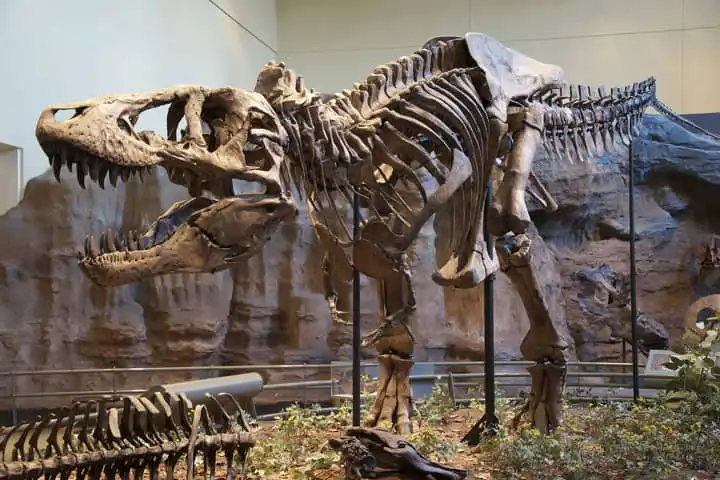The time when the dinosaurs ruled supreme, the theropod among them, according to a report in scietechdaily.com evolved stronger jaws over time enabling them to chew and consume food that was tough. This is what came to light in a new study, the findings of which were published in the journal Current Biology.
For this research, the scientists made use of computer simulation and digital modelling to unearth a common tendency in the strengthening of jaws in theropods. It was the expansion of the rear jaw portion in all the groups coupled with evolution of downturned jaw in herbivores while in case of the carnivores it was upturned jaw.
Also read: Flying Dinosaurs with a 40 feet wingspan once dominated the skies
The details of the study also disclosed that the biomechanical analysis indicated that the changes in the form of the jaws made them more stable when biting, thereby reducing the chances of bone fracture to the minimum.
The team of international scientists led by the University of Birmingham, made digital models of more than 40 lower jaws belonging to diverse theropod dinosaur groups for this research. These included that of carnivores like Tyrannosaurus and Velociraptor, and herbivores like ornithomimosaurs, therizinosaurs, and oviraptorosaurs.
Elaborating about theropod dinosaurs, the study’s lead author, who is a PhD researcher at the University of Birmingham, Fion Waisum Ma said: “Although theropod dinosaurs are always depicted as fearsome predators in popular culture, they are in fact very diverse in terms of diets. It is interesting to observe the jaws becoming structurally stronger over time, in both carnivores and herbivores. This gives them the capacity to exploit a wider range of food items.”
Sharing more details, she added: “Theropod dinosaurs underwent extreme dietary changes during their evolutionary history of 165 million years. They started off as carnivores, later on evolved into more specialised carnivores, omnivores and herbivores. Studying how their feeding mechanics changed is key to understanding the dietary transitions in other vertebrate animals too.”
There are examples of these changes that took place over a period of time. In carnivores like tyrannosauroids, for example, the early form like Guanlong had a jaw that was relatively slender and straight but in forms which came later, like that of Tarbosaurus and Tyrannosaurus, jaws evolved into deeper ones, with the front portion bending upward thereby increasing jaw strength.
For theropods which were herbivorous too, strengthening of the jaw was vital since their jaws had to undergo a lot of stress when cutting plants continuously and repetitively. The jaws of herbivores like Erlikosaurus and Caudipteryx were extremely downward-bending to help dispel this type of stress.
Elaborating on the process of evolution of the jaws, Dr. Stephan Lautenschlager, Senior Lecturer at the University of Birmingham and senior author of the study, said: “It is fascinating to see how theropod dinosaurs had evolved different strategies to increase jaw stability depending on their diet. This was achieved through bone remodelling — a mechanism where bone is deposited in regions of the jaw that experience high stresses during feeding.”
Also read: The world wakes up to a new species of Dinosaurs with killer tails
During their study of tyrannosaurids feeding mechanics through growth, the researchers observed that the more upturned jaws which were deeper in the adult theropods like Tyrannosaurus and Tarbosaurus, were stronger structurally when compared to those of their juvenile forms.
Explaining further, Dr. Lautenschlager stated: “The similarity between jaw strengthening through growth and through time suggests that developmental patterns in juvenile dinosaurs ultimately affected the evolution of the whole group. This likely facilitated the jaw evolution of theropod dinosaurs and their overall success for over 150 million years.”




















